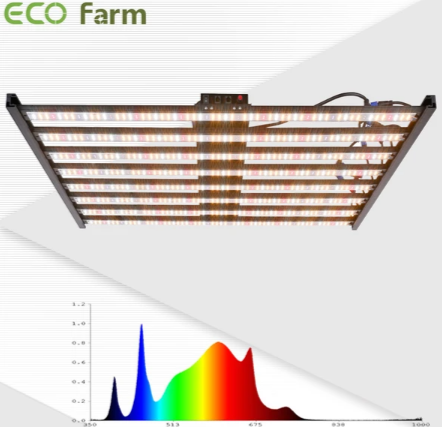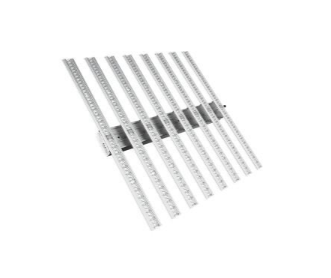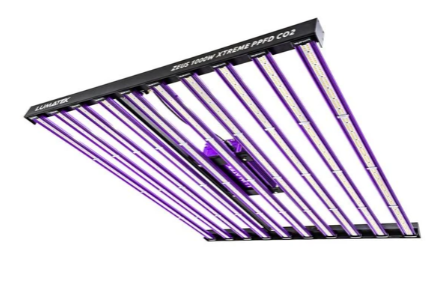Green plants require light so that they can grow. The amount of light needed varies depending on the plant. When plants are grown indoors, gardeners use artificial light to allow the plants to undergo photosynthesis. For a long time, the light that has been in use was by fluorescent bulbs.
Generally speaking, a BEST 1000W LED grow light will cover about a 5 by 5 foot area.
But it’s not quite that simple.
The actual coverage area of a 1000 watt grow light depends on a number of factors like the type of light, the quality of the light, the light requirements of the plants, the grow space, and more.
ECO Farm ECOD Samsung UV+ IR 1000W Dimmable LED Grow Light

PROS
Own factory outlet
Fantastic cooling system
Full spectrum
Energy saving
Double chip 10W lights
CONS
Bulb aren't 100% reliable.
Light won't be as good for 50,000 hours as claimed.
Fohse F1V 1000W (277-480V) LED Grow Light

PROS
Dual chip technology
Full spectrum
Better coverage area
Attractive returns and replacement policies
CONS
For indoor use only. Not Waterproof
Extremely powerful. Can be harmful if watched directly.
Lumatek Zeus 1000W Xtreme PPFD LED Grow Light

PROS
Powerful double chip lights
UV function
Professional spectrum
Overheat protection
CONS
No Cons
How to Choose LED Grow Lights
The first step in choosing LED grow lights is to understand the different types – there are 3 of them. The first is spread style, which basically just means that lots of small LEDs are spread over a large area.
The second type is the traditional LED panel, which is the most common for growers in Canada. These have small to medium wattage diodes and compact lamps. The third style is the chip-on-board, or COB LED grow lights, which isn’t as common for grow room environments.
Things to Consider When Buying LED Grow Lights
So you’ve thought about the type of LED grow lights system you want, what’s next? There are a few more things to consider before investing in an entire light system and spending a big chunk of change. Here’s what you need to think about:
Size
Size is an obvious consideration – you wouldn’t use the same LED lights for a 4×4 tent as you would for a warehouse grow. These lights vary in size, and the larger the size the greater the coverage area.
Power Usage
Just as they vary in size, LEDs also vary in wattage with the most common wattage ratings being 300, 400, 600, and 1000. Keep in mind that these lights will be running for an average of 12 hours per day, so the trick is to find the ideal amount of illumination without overdoing it on power.
Color Spectrum
Full-spectrum light helps plants to meet their full potential – it’s very similar to the natural light that is given off by the sun’s rays. But try to mainly focus on red and blue led grow lights that emit the UV through infrared spectrums, which are essential for plant growth.
Light Use
Light control is a major aspect of your grow op, which is why you should try to find LEDs that are easy to install, use, and adjust. You’ll want to have complete control over the grow room light cycle, down to the last minute, and some lights make this easier than others.
Heat Output
LED grow lights that give off very little heat prevent the grow room temperatures from rising too high. High heat LEDs, on the other hand, will not only put your plants at risk, but they’ll require you to put more effort and resources into cooling the room.
Cost
Even though the growing demand for LEDs has brought down their cost over the years, LED grow lights don’t come cheap. Try to find something within your budget, but never, ever compromise on quality to save a few bucks. ECO Farm led grow light can save your cost.
Conclusion
Having considered all factors, these are our best recommendations for the best 1000W grow lights in the market today. We hope that the information is sufficient enough to help you make a decision when selecting a suitable light source for your cannabis growth.